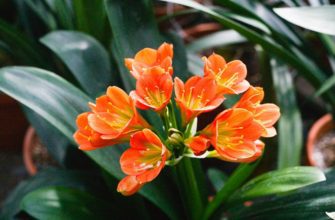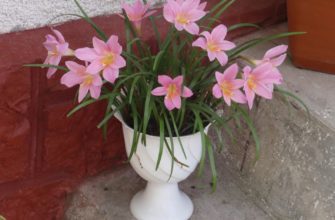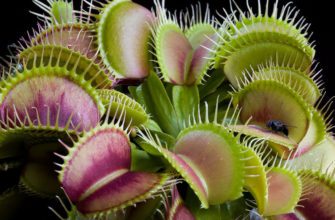Zephyranthes is a beautiful indoor plant that captivates with its beauty and grace. Its popularity among gardeners continues to grow, and this is not surprising, given its unique features and appeal. In this text, we will dive into the world of zephyranthes and consider various aspects of growing it as a houseplant.
Zephyranthes is a plant with bright and elegant flowers that add a touch of luxury to any interior. The appearance of the plant impresses with its grace and elegance. Zephyranthes flowers have a variety of shapes and colors, from bright red and pink to delicate purple and white. Their petals can be corrugated or smooth, which gives them a special appeal and charm.
As a houseplant, zephyranthes is becoming increasingly popular among flower lovers and gardeners. Its ability to grow and thrive indoors makes it an ideal choice for those looking to add the beauty of a plant to their home or office. Additionally, zephyranthes have a number of benefits that make their care relatively simple and accessible, even for novice gardeners.
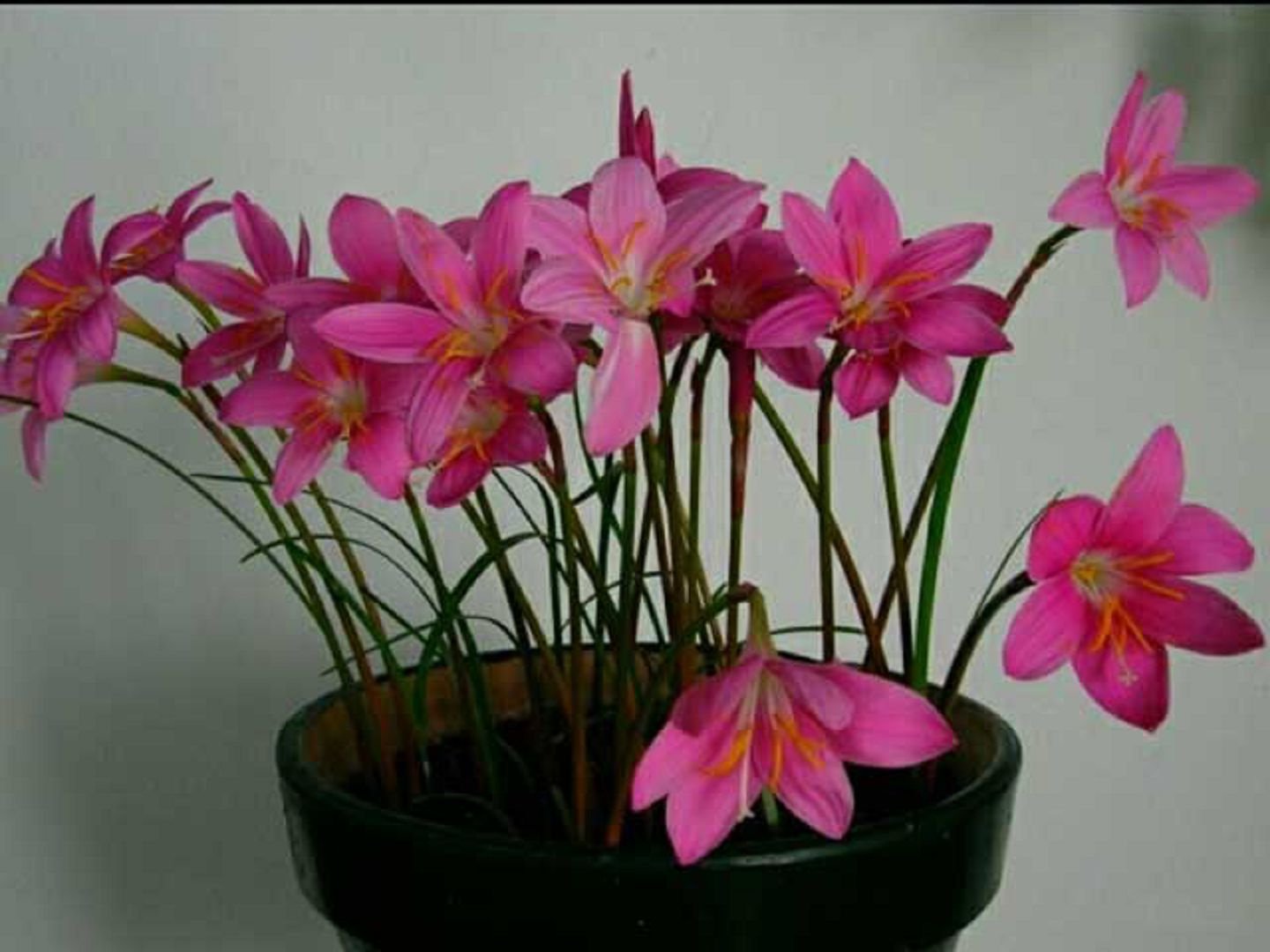
Zephyranthes: general information and description
Zephyranthes, scientifically known as Zephyranthes, is an amazing and elegant plant that attracts attention with its beautiful flowers and unique appearance. The plant belongs to the Amaryllidaceae family and grows in various regions of the world, including South and Central America, as well as parts of Asia.
Zephyranthes is characterized by its large flower, which opens on a long stem. Flowers can be single or collected in inflorescences. They are often bell-shaped or star-shaped and have rich colors, including white, pink, orange, yellow and red.
Some species of the plant can change the color of their flowers depending on age or time of day, which gives them additional mystery and beauty. Zephyranthes leaves, usually linear or lumbar, form a rosette at the base of the plant.
They are green and quite narrow, which creates an interesting contrast with the bright flowers. The plant can reach a height of several centimeters to half a meter, depending on the species and growing conditions.
One of the wonderful features of zephyranthes is its ability to thrive in a variety of conditions. It can be either a perennial or a bulbous plant, depending on the species.
Zephyranthes prefer a sunny or semi-shaded location and well-drained soil. They can tolerate both short periods of drought and high humidity, making them an excellent choice for a variety of climates.
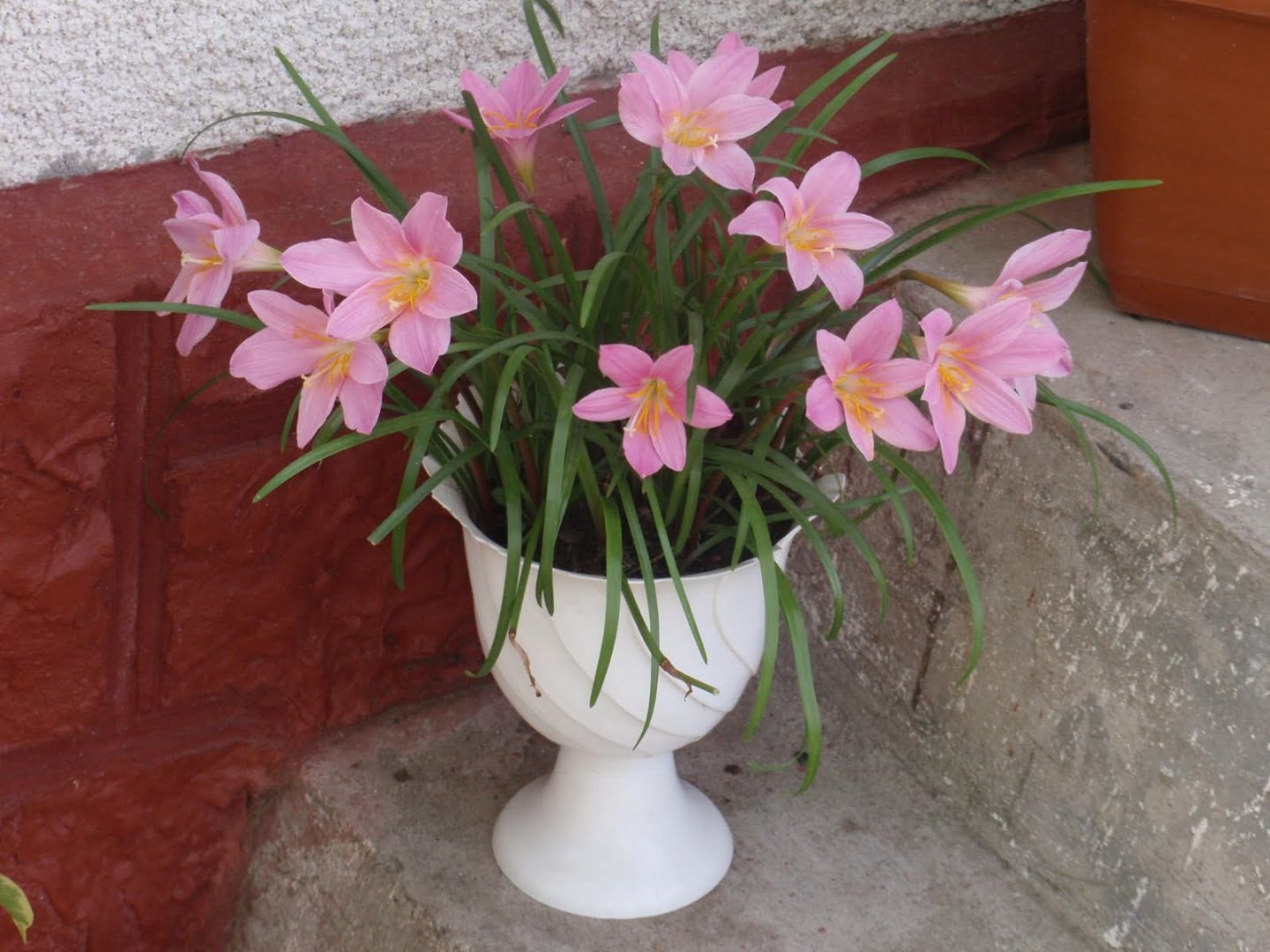
Zephyranthes as a houseplant
The plant belongs to the Amaryllis family. It is also called "flying laterna". The spring-summer flower opens brightly and effectively on long peduncles that can reach up to 30 cm in height. The aroma of the flowers is pleasant and light.
Flowers can be white, pink, red, yellow and orange. Growing zephyranthes as a houseplant is quite possible. It is often used in interior design due to its bright and unusual appearance.
An important condition for plant care is the correct choice of planting location, lighting and watering:
- Landing site. Zephyranthes need to be planted in soil that contains drainage to avoid stagnant moisture. Humus or a universal soil mixture for flowers can be used as a substrate. It is best to plant zephyranthes in a large pot so that it has enough space for the development of the root system. It is important to remember that the flower does not tolerate transplantation well, so you should not transplant it too often.
- Lighting. The plant needs bright but diffused light. It does not tolerate direct sunlight, so the planting site should be away from direct sunlight. Lack of sufficient lighting can lead to the plant wilting and lack of flowering.
- Watering. Zephyranthes need moderate watering. It is necessary to monitor the soil moisture, but at the same time avoid stagnant moisture. Frequent and excessive watering can lead to root rot. In winter, zephyranthes need rest and cooling, so it is better to reduce watering during this period.
In general, zephyranthes is a wonderful indoor flower that does not require complex care. It is important to observe the growing conditions and properly care for the plant.
If you can successfully grow zephyranthes indoors, it will become a bright and unusual decoration for any interior.
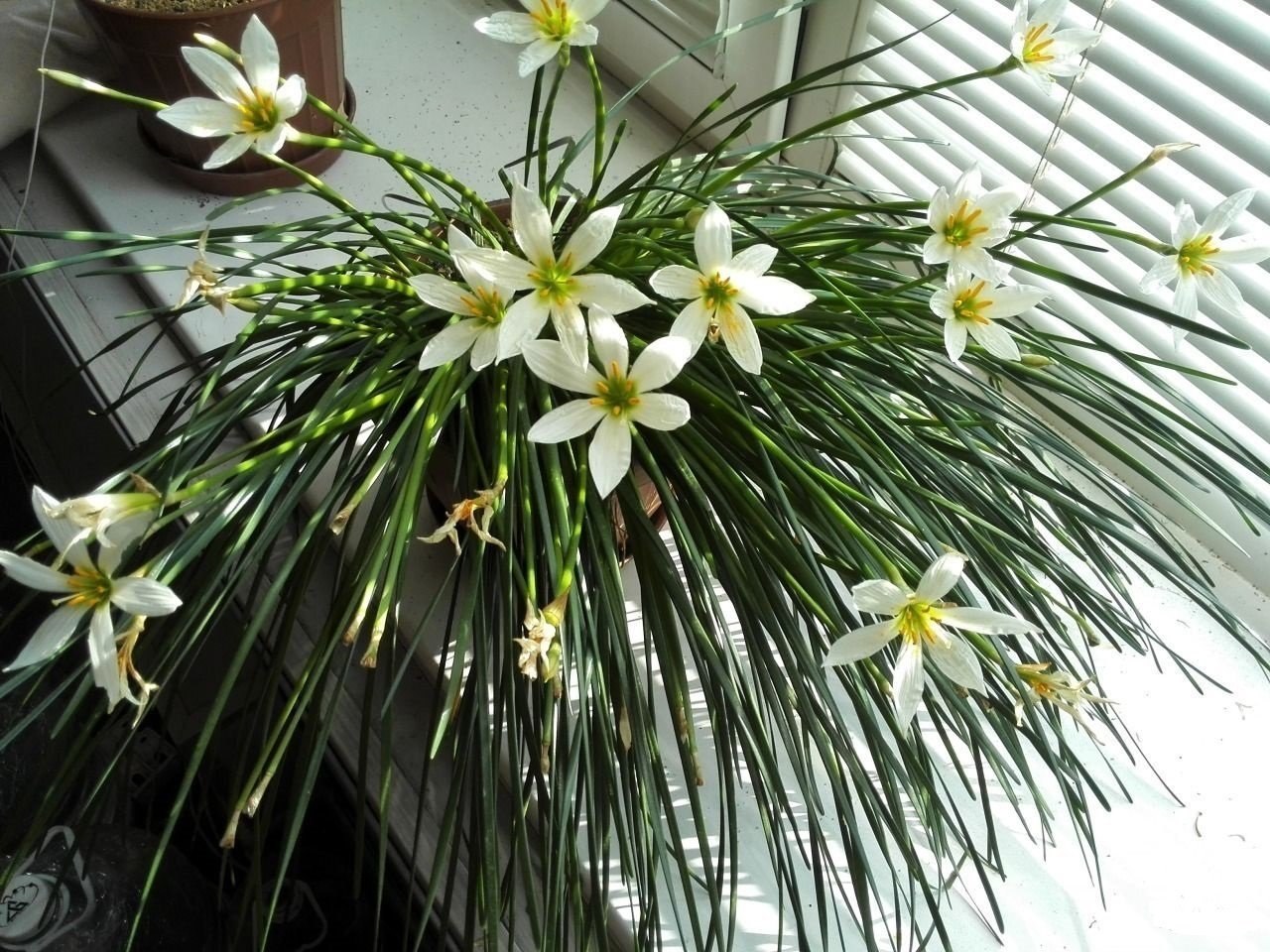
Caring for zephyranthes at home
Caring for zephyranthes at home requires some attention and care, but with the right conditions and regular care, you can enjoy its beauty and health for many years. Here are some important aspects of caring for zephyranthes:
- Lighting: Plants love bright but diffused light. Place the plant in a bright spot in your home where it will receive enough light but will not be directly exposed to direct sunlight. An ideal option is a window on the east or west side of the room. If you do not have a suitable window, you can use artificial lighting, such as phytolamps, to provide the necessary level of light for the zephyranthes.
- Temperature: Zephyranthes prefer warm temperatures, ranging from 18 to 24 degrees Celsius. Avoid sudden changes in temperature and do not place the plant near cold or hot springs. They can be sensitive to cold drafts, so try to avoid such conditions.
- Watering: Regular watering is an important aspect of caring for zephyranthes. Keep the soil moderately moist, but do not overwater the plant. Check the top layer of soil and water when it begins to dry out. During the period of active growth and flowering, the plant may require more frequent watering, and during the dormant period, in autumn and winter, watering can be reduced. It is important to avoid overwatering, which can lead to root rot.
- Humidity: Zephyranthes like medium humidity. In dry rooms or during the winter heating season, when the air becomes drier, you can use various methods to increase humidity, such as spraying water around the plant or using humidifiers. This will help maintain the optimal humidity level for the zephyranthes.
- Soil: The plant likes well-drained soil. Use a special succulent mix or add sand or perlite to standard soil to ensure good drainage. This will help prevent the roots from becoming overwatered and rotting.
- Fertilizer: Zephyranthes require moderate fertilization to grow well and bloom. Use a fertilizer specifically formulated for flowering plants or succulents and follow the manufacturer's instructions. Fertilize the plant during the active growth period, usually spring and summer, and reduce or stop fertilizing during the dormant period or winter.
- Trimming: Prune the plant lightly as needed to maintain its shape and appearance. Remove spent flowers and old or damaged leaves. This will help stimulate new growth and keep the plant healthy.
Caring for the flower at home is not difficult, but it requires regularity and attention to the needs of the plant. Following these recommendations for lighting, temperature, watering, humidity, soil, fertilization and pruning, you will create optimal conditions for a healthy and beautiful zephyranthes in your home.
Remember that each plant is unique, and observe how it responds to care to tailor your care to its specific needs.
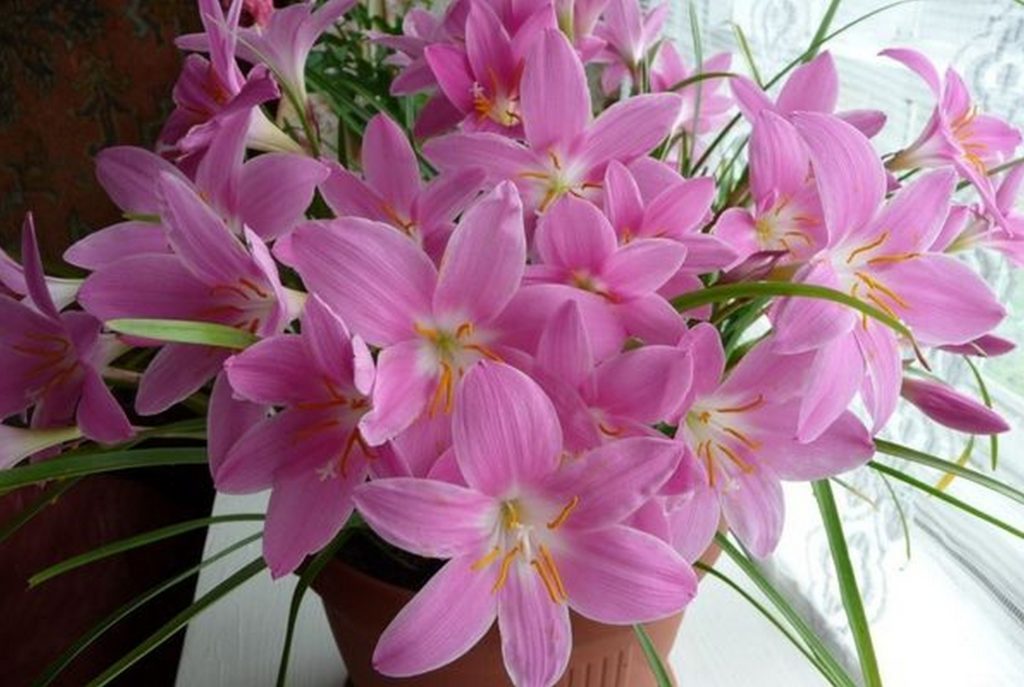
Peculiarities of the dormant period and appropriate care
The dormant period is the period of rest and restoration of the flower's strength, which occurs after the end of the flowering period. For zephyranthes, the dormant period occurs in autumn and winter.
During the cold season, the plant's growth slows down, cooling sets in, and the plant stops growing and developing. Features of the dormant period for zephyranthes:
- Reducing the amount of watering: Zephyranthes does not require as much water in the cold season as in the warm season. Excessive watering can result in damage to the root system or stem rot. Before watering, it is necessary to check the condition of the soil and ensure that it dries out between waterings.
- Reducing the amount of fertilizers: The plant does not need fertilizer during the dormant period. Instead, you should concentrate on thoroughly cleaning the leaves. For this purpose, you can use a damp cloth or sponge and very gently clean the surfaces of the leaves. This helps remove dirt and increase the stimulation of the plant so that it grows effectively next season.
- Root system care: Regularly checking the condition of the roots is the foundation of the health of the zephyranthes. It is necessary to carefully monitor the condition of the soil coma and stem, as well as provide drainage in the pot.
- Maintain optimal temperature: Zephyranthes tolerates small temperature changes well. However, with abundant watering, the soil can cool down and cause water stagnation, which inevitably leads to the death of the root system. It is important to monitor the optimal temperature in the room, and if necessary, provide additional lighting for the plant.
- Maintain air humidity: The plant does not require high humidity relative to the leaves. However, it is important to maintain a regular level of air humidity manually, for example, with a sprayer, since in the absence of water, insects can attack the leaves.
During the dormant period, zephyranthes does not require frequent treatments or other active care. However, it does require regular monitoring and removal of all negative factors that can lead to damage to the root system or death of the plant.
In general, rest is an important time for restoring the health of the plant so that the flower will again delight you with its beautiful appearance next season.
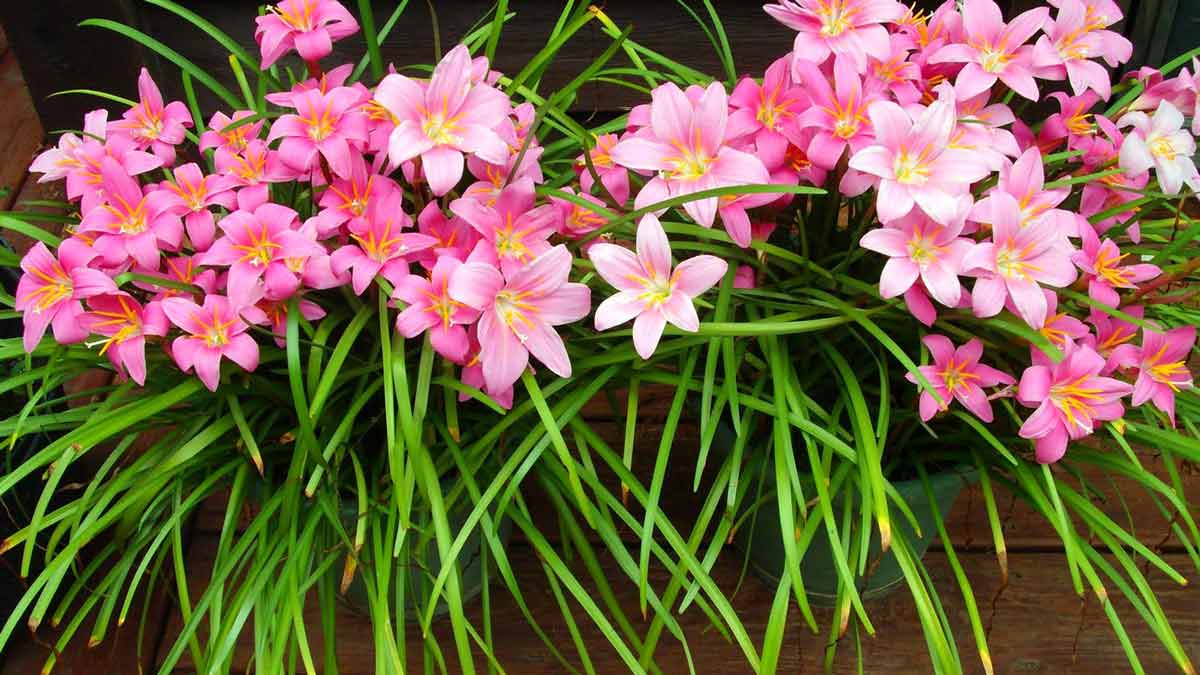
Reproduction of Zephyranthes
Propagation of zephyranthes is an interesting process that allows you to get new plants and expand your collection of this beautiful flower.
Zephyranthes can be propagated in a variety of ways, including cuttings, bulb division, and seed propagation. Let's look at each of these methods in more detail:
- Cuttings: Cutting is one of the most popular methods of flower propagation. For this method, you will need a healthy plant stem that you can use to obtain new plants. Cut the stem using a sharp and clean pruning shears or knife. Stems of mature plants are usually chosen, as they have a higher chance of successful cutting. Then remove the lower leaves of the cut stem, leaving only the upper leaves. Plant the cutting in moist soil or a mixture of sand and peat. To improve survival, you can use root stimulants. Maintain high humidity around the cutting and place it in a bright place, but protected from direct sunlight. In a few weeks, roots will appear, and you can transplant the new plant into a separate pot.
- Dividing the bulbs: This method is suitable for zephyranthes with bulbous structures. When the plant reaches maturity, its bulbs can be divided into several parts, each of which will develop into a new plant. To divide the bulbs, select healthy and large specimens. Carefully separate the bulbs from each other using pruning shears or your hands. Make sure that each part has enough roots and leaves. Plant each bulb in a separate pot with suitable soil for succulents and provide proper care. Soon, new plants will begin to grow and develop.
- Seed propagation: Another way to propagate the plant is by seed propagation. This method requires more patience and time, but can be a lot of fun. Collect ripe seeds from mature zephyranthes flowers. Remove the husks and plant them in a pot with suitable soil for succulents. Moisten the soil and place the pot in a bright place, avoiding direct sunlight. Keep the soil moist, but avoid overwatering. If conditions are favorable, the seeds will begin to germinate, and after a while you will have new zephyranthes plants.
It is important to remember that propagating zephyranthes can take time and requires patience and care. Each of these methods has its own characteristics and advantages, and you can choose the one that is most convenient for you. Experiment, watch the growth and development of new plants and enjoy the process of propagating this beautiful flower.
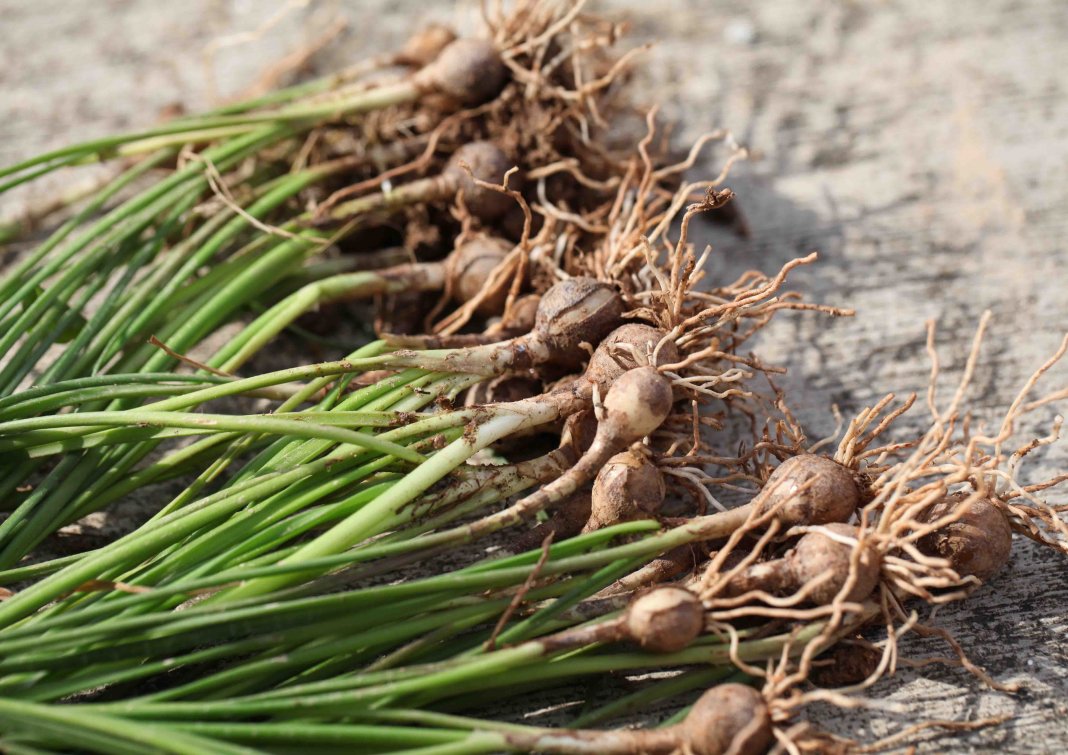
Types of Zephyranthes
Zephyranthes (Latin Zephyranthes) or crocus is a genus of plants of the Amaryllidaceae family, which includes about 70 species of flowers. The plant is distinguished by its small size, as well as its ability to create a charming look in the garden or on the window.
Some types of zephyranthes:
- Zephyranthes Pink (Zephyranthes rosea) is a plant from 20 to 25 cm high with pink-lavender flowers in the shape of a cylinder, located on high rods.
- Zephyranthes White (Zephyranthes candida) - up to 30 cm high, with white flowers that bloom frequently and abundantly in June and July.
- Zephyranthes Yellow (Zephyranthes citrina) - from 20 to 30 cm in height, with large yellow flowers of irregular shape and dark green leaves.
- Zephyranthes Raspberry (Zephyranthes grandiflora) - up to 20 cm high, with large raspberry-red flowers.
- Zephyranthes Cuban (Zephyranthes carinata) - up to 20 cm high, with white flowers that have initials added to the throat and dark leaves.
- Zephyranthes Grapes (Zephyranthes labuffaros) - from 15 to 25 cm in height with star-shaped flowers, the color of which can be bright pink to red.
- Zephyranthes Crimean (Zephyranthes reginae) - up to 30 cm high, with amazingly beautiful large flowers of bright orange color.
An interesting fact is that zephyranthes can grow both in the garden and as a house plant in pots. In case of growing the plant as a house flower, it is necessary to provide it with regular watering and fertilizing.
By choosing the most suitable type of zephyranthes for you, you can create a beautiful and unique corner in your home that will delight you with beautiful flowers and a pleasant aroma.
The importance of proper care and attention for successful cultivation of zephyranthes
The importance of proper care and attention for successful zephyranthes cultivation cannot be underestimated. This beautiful plant requires care and attention to thrive and delight you with its colorful flowers. Here is why proper care and regular attention are key factors for successful zephyranthes cultivation:
- Optimal lighting: Zephyranthes love bright, light lighting, but they do not tolerate direct sunlight, especially during the hottest hours of the day. Place the zephyranthes in a room where it receives enough light, but is not exposed to direct sunlight. Windows that face east or west can be a good choice, as they offer bright but diffused lighting. If you do not have a suitable window, you can use artificial lighting, such as phytolamps, to provide the plant with the necessary level of light.
- Regular watering: Zephyranthes need regular watering to keep the soil moderately moist. Water the plant when the top layer of soil dries out, but avoid overwatering. Zephyranthes do not tolerate stagnant water, so it is important to ensure good drainage and do not allow water to stand in the tray of the pot. Remember that soil moisture can vary depending on the time of year and indoor conditions, so monitor the needs of the plant and adapt watering accordingly.
- Temperature and humidity: Zephyranthes prefer warm temperatures and moderate humidity. The ideal temperature for their growth is approximately 18-24 degrees Celsius. Avoid sudden changes in temperature and cold drafts, which can damage the plant. To maintain optimal air humidity, you can use various methods, such as spraying water around the plant or using humidifiers, especially in dry rooms or during the winter when heating systems can dry out the air.
- Fertilizers: Regular fertilization is important for zephyranthes to ensure they have the nutrients they need for healthy growth and abundant blooms. Use a fertilizer specifically formulated for flowering plants or succulents and follow the directions for use. Fertilization frequency may vary depending on the brand of fertilizer, so follow the manufacturer's recommendations.
In fact, the plant is not very demanding of itself. It needs to be watered and fertilized on time. Then the flower will delight you with its appearance.




